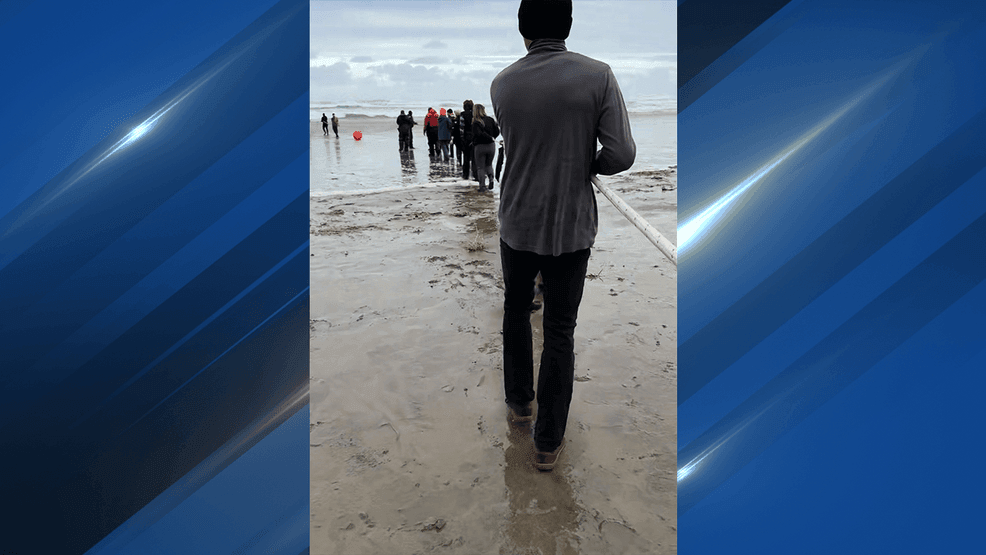YACHATS, Ore. — Experts are looking into the stranding of a young humpback whale who was euthanized Monday, nearly two days after it washed ashore north of Yachats, Oregon while entangled in crabbing gear.
Several research teams conducted a necropsy on Tuesday, and found the 26-foot-long male humpback had some lesions, no stomach contents, and the body was in overall fair condition.
Oregon State University’s Veterinary Diagnostic Lab took samples for further tests, and will release analysis once the results are in.
The whale was first stranded on November 15, and the National Oceanic and Atmospheric Administration (NOAA) said he was tangled in gear attributed to the 2023-24 Oregon commercial Dungeness crab fishery.
PAST COVERAGE | Stranded humpback whale euthanized days after it washes ashore tangled in ropes
Trained responders from Portland and Seattle arrived the next day and worked to free the whale, trying to free it with a rope-and-pulley system at high tide.

Teams use a rope to try and free a stranded humpback whale at San Marine, Oregon on November 17, 2025 – Image courtesy Robert Heater
After more attempts to get it back into the water, NOAA’s West Coast Marine Mammal Stranding Network determined the most humane option was euthanasia, saying its time onshore left it weak and unlikely to survive.
“Refloating stranded large whales is challenging, and there are limited options. Simply pulling a large whale back into the ocean is considered inhumane—it can dislocate the tail, cause paralysis, or even break the spinal cord,” NOAA said. “Another option, dredging a channel for a whale, has historically resulted in the whale drowning.”
The option the trained responders chose of using a rope and pulley system is difficult, and not always successful, but was the best option provided at the time.
A whale’s body is adapted to the buoyancy of water. Its own body weight causes immense pressure once it is stranded, which can lead to respiratory and circulatory collapse,” NOAA said.
While the stranded whale brought out a lot of concerned community members who were eager to help get the whale back into the ocean, NOAA said they appreciated their willingness to give the teams room to work.
“Many people want to help stranded animals, but only trained responders should approach them,” NOAA said. “Even if a stranded animal is injured, attempting to touch or move them can be dangerous for you and the animal.”
